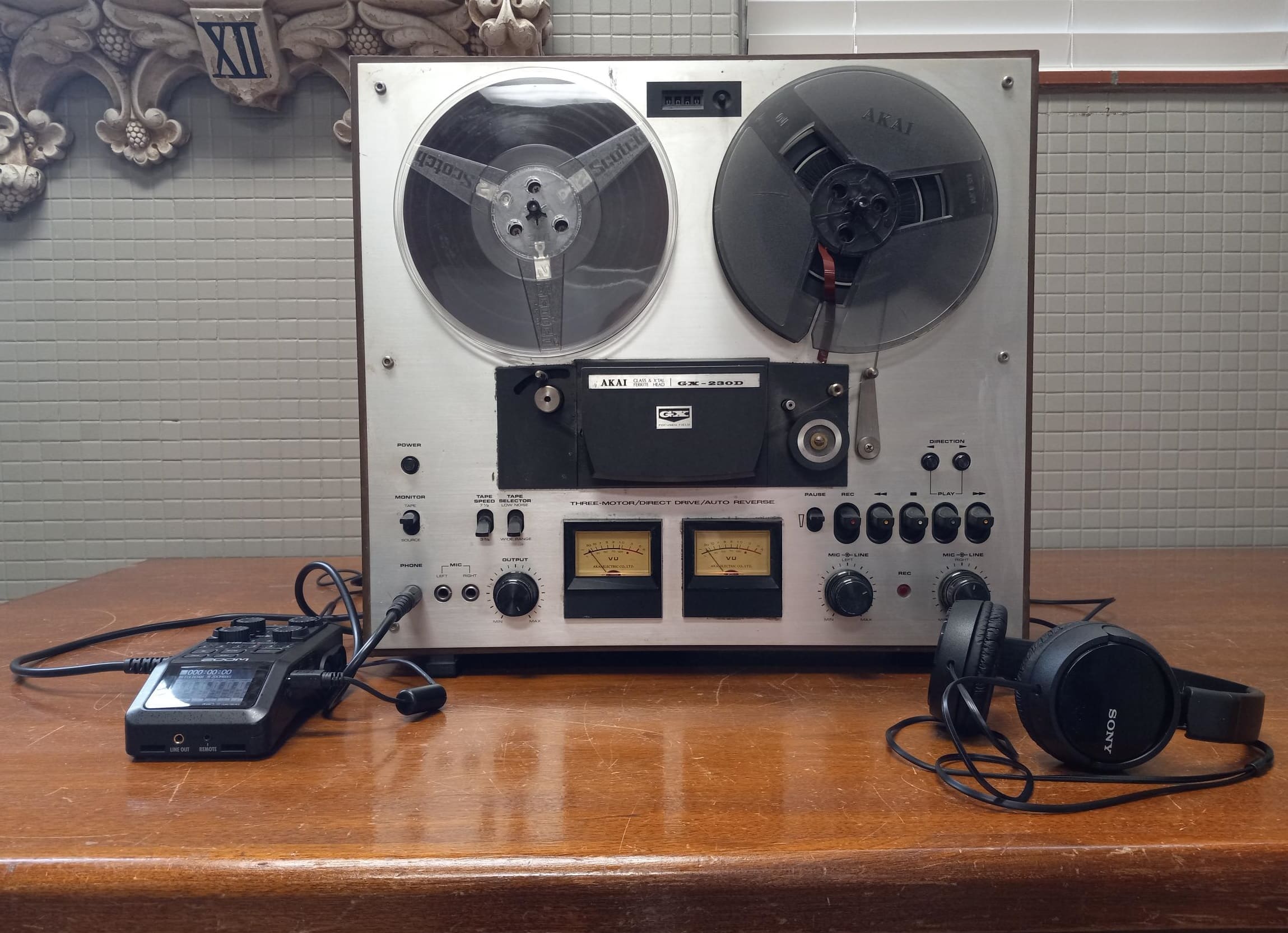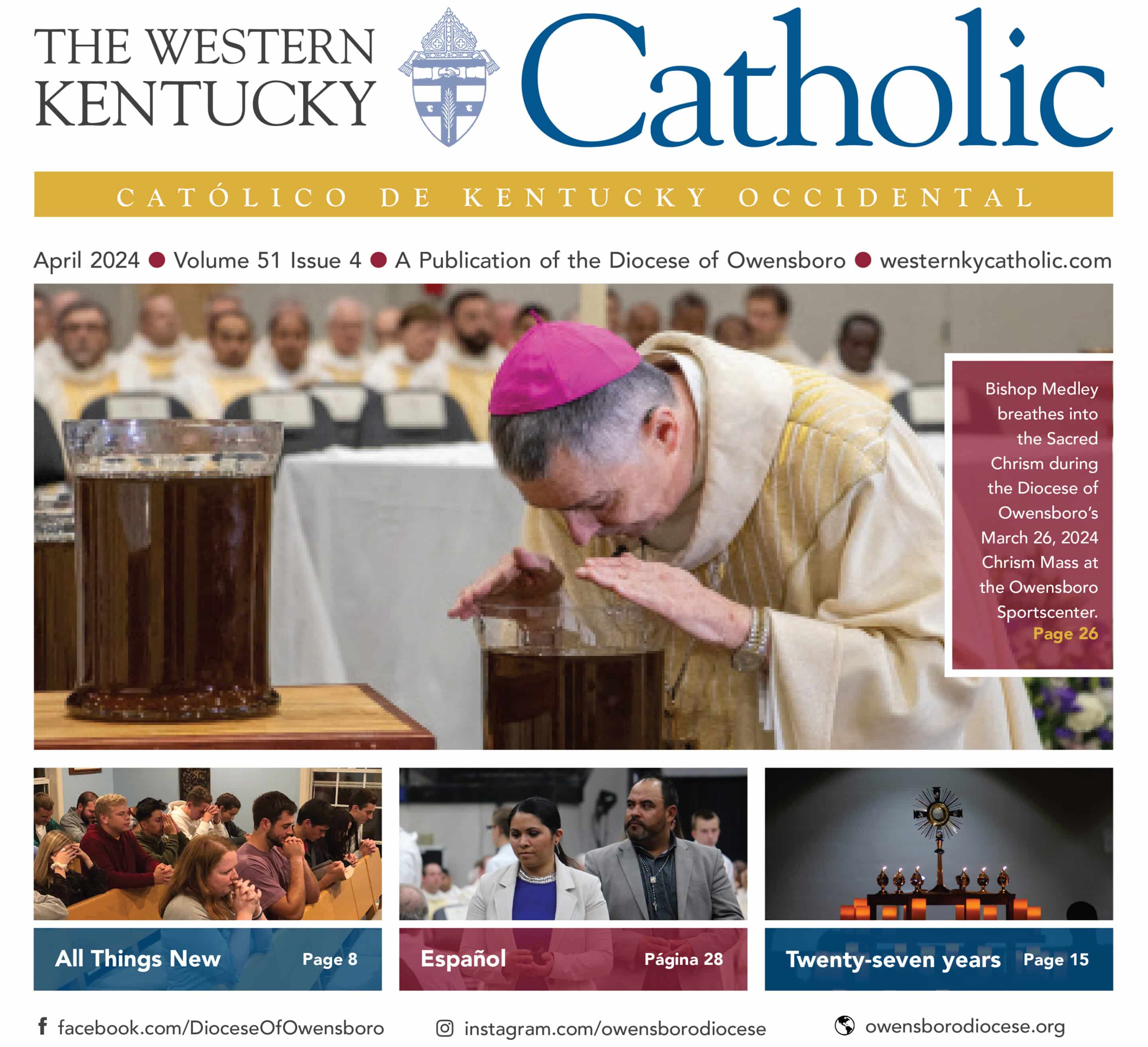
The equipment for the archives’ in-house digitization of reel-to-reel tapes. COURTESY OF ARCHIVES
Preserving the Requiem Mass of Bishop Francis R. Cotton
BY EDWARD WILSON, ARCHIVES
During November, the Church celebrates those holy souls who have gone on to attain their heavenly reward. Keeping with this theme, I usually feature a relic from the archives for the November article. However, the archives is currently working on a very special project and the first fruits of this venture fit perfectly into this month’s celebration.
Over the past hundred years many different analog formats of preservation have come and gone. Updating these to keep them accessible is a primary concern for archives. This is particularly true when the contents are at risk of deterioration. This is the case with the diocesan reel-to-reel collection. After so many years film and tape will begin to deteriorate, suffering from what is called vinegar syndrome. The name is derived from the strong vinegar odor produced by the affected medium. The process is unavoidable and once it sets in it is irreversible. This process has begun with most or all of our reel-to-reel tapes. Another article is warranted to fully explain the inhouse measures we are now undertaking to preserve these records digitally. However, this article is about our very first digitally preserved product: Bishop Francis Ridgley Cotton’s Requiem Mass.
On Sept. 30, 1960 at 10:34 a.m., the mournful song of a choir of priests erupts almost instantaneously filling the somber mood of St. Stephen Cathedral with a powerful combination of otherworldly lamentation and beauty. The ancient plea fills the towering cathedral: “Requiem aeternam dona eis, Domine. Et lux perpetua luceat eis” (“Eternal rest give unto them, O Lord. And let perpetual light shine upon them.”) Archbishop John A. Floresh of the Archdiocese of Louisville, a friend of Bishop Cotton, stands before the altar, before Christ, prepared to celebrate the Pontifical Mass of his fellow bishop.
The cathedral was filled to capacity and the Owensboro radio station WOMI broadcasted the Mass to hundreds of homes for those who could not gain entrance into St. Stephen. The service is beautiful, a ritual opus constructed by thousands of years of Catholic bereavement and faith in the world to come. The ceremony is narrated for those listening by Fr. Charles Saffer of the Diocese of Owensboro.
Bishop Grimmelsman of the Diocese of Evansville gave the sermon reflecting on the service of Bishop Cotton. His address is remarkable. His words are not sweet and covered in honey. They are sober and dispassionate; a sendoff Bishop Cotton would have appreciated. He recalls a man that is today a mythical figure of austere and unbending discipline. Many now, and presumably then, find him harsh. Bishop Henry J. Grimmelsman recounted that “He did not surrender to the common failing to seek popularity at the expense of duty.” He recalls Bishop Cotton’s successes in the diocese. In his 22 years as bishop, 30% of Catholic children attending Catholic schools rose to 90%, 30% more parishes and 70% more Catholic schools were erected, and the number of seminarians from the area went from 28 to 64. The list goes on and on.
This is a moment snatched from time. These are the same words you, your parents or grandparents heard on that day many years ago. This is a project that the archives is very excited about. So many local Catholic moments will be given life once again.
Edward Wilson is the director of the Diocese of Owensboro’s Archives and the Archives of the Ursuline Sisters of Mount Saint Joseph. Comments and questions may be sent to [email protected].
Originally printed in the November 2022 issue of The Western Kentucky Catholic.

